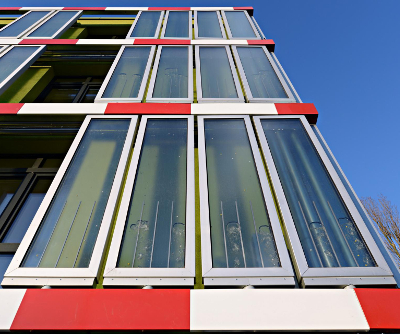Potential builds for energetic new face
 Some high-tech building projects could be a sign of the future of intelligent structural design.
Some high-tech building projects could be a sign of the future of intelligent structural design.
As rooftop solar, vertical gardens and smart glass bring environmental consciousness into building design, the new base of the the Agro & Food Cluster (AFC) New Prinsenland has been dubbed the next big thing.
The building features the world’s first bio façade: a cladding made of locally-sourced hemp fibre and bio-resin.
“The green materials will largely be based on organic residues from agriculture and horticulture,” say the designers at Studio Marco Vermeulen.
“In the future biobased economy these residues (biomass) will first be processed into usable raw materials. The remaining organic material is available for renewable energy.”
The panels are embossed with the letters HCN - the chemical composition of natural gas, hydrogen (H), carbon (C) and nitrogen (N).
At the International Building Exhbition in Hamburg last year, the world was given a glimpse into an even more advanced design - the world’s first algae-based bioreactor façade.
A demo model has been installed on the exterior of The BIQ House, using 200 square metres of integrated photo-bioreactors.
Micro-algae are cultivated to grow within the glass layers of the facade, forming an energy-generating ‘bio-skin’.
The micro-algae provide a renewable energy source while also shading the building, offering insulation, interior thermal comfort and acoustic improvement.
“Using bio-chemical processes in the façade of a building to create shade and energy is a really innovative concept,” said green energy research leader Jan Wurm.
“It might well become a sustainable solution for energy production in urban areas, so it is great to see it being tested in a real-life scenario.”









 Print
Print